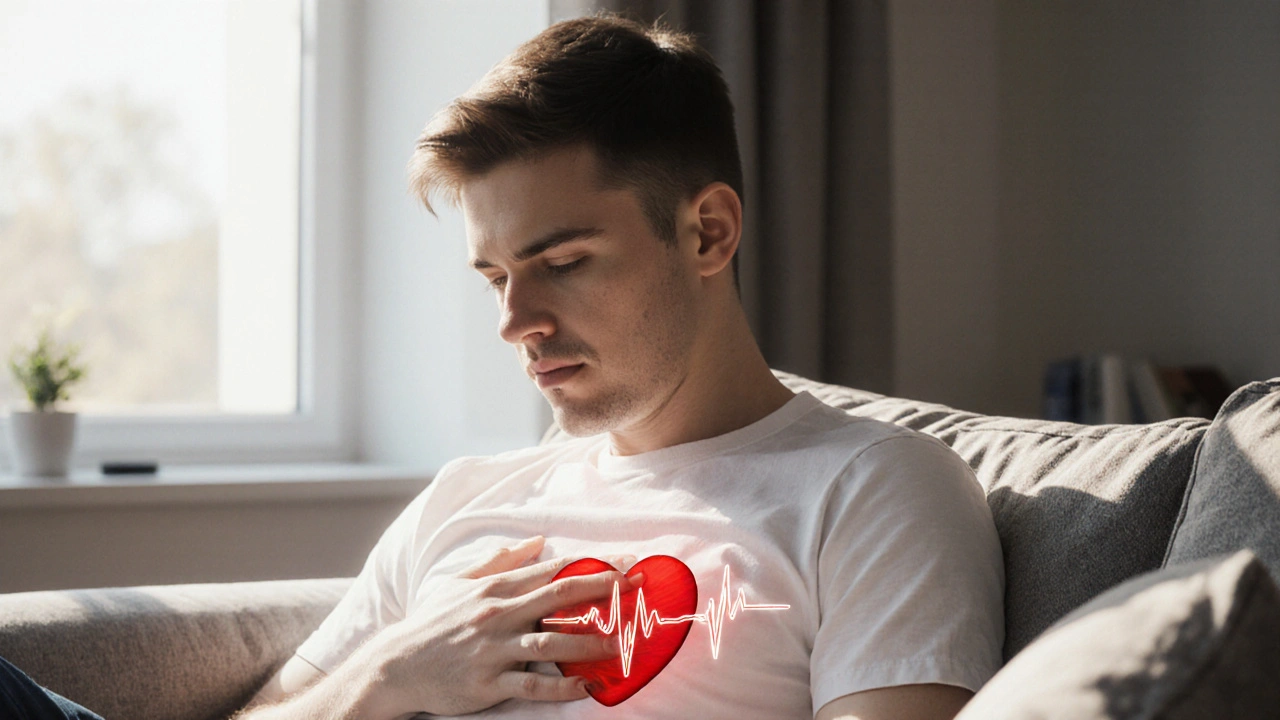SVT (Supraventricular Tachycardia): What You Need to Know
When dealing with SVT, a rapid heart rhythm that starts above the ventricles. Also known as Supraventricular Tachycardia, it can cause sudden palpitations, shortness of breath, and dizziness. Beta blockers, medications that slow the heart by blocking adrenaline and cardiac ablation, a minimally invasive procedure that destroys tiny heart tissue triggering the fast rhythm are two of the most common ways doctors bring the rate back down. Understanding how these tools work together helps you take charge of the condition and avoid unnecessary anxiety.
How SVT Shows Up and Why It Matters
SVT typically appears as a sudden burst of rapid beats – often 150 to 250 per minute – that can last seconds or several hours. The episode usually starts without warning, especially during stress, caffeine intake, or after vigorous exercise. An ECG (electrocardiogram) is the go‑to test; it captures the heart’s electrical pattern and lets a clinician confirm that the rhythm originates above the ventricles. If left untreated, frequent episodes may weaken the heart over time and increase the risk of more serious arrhythmias. That’s why early detection and a clear treatment plan are essential.
Medication and procedures are chosen based on how often SVT strikes and how severe the symptoms are. Antiarrhythmic drugs, agents like flecainide or propafenone that stabilize heart cells work for people who need a daily preventative approach. For those with occasional bursts, a short‑acting beta blocker taken at the first sign of an episode can blunt the adrenaline surge and stop the rhythm in its tracks. When medication isn’t enough or causes side effects, cardiologists often recommend cardiac ablation. During ablation, a tiny catheter delivers heat or cold energy to the precise spot that sparks the fast beats, effectively “turning off” the problem area. Success rates for ablation are high – over 90% of patients experience long‑term relief – and recovery is usually quick.
Beyond drugs and procedures, lifestyle tweaks can lower the chance of an SVT flare. Cutting back on caffeine, nicotine, and alcohol reduces triggers, while regular aerobic activity strengthens the heart and improves overall rhythm stability. Stress‑management techniques such as deep breathing, yoga, or mindfulness can also keep adrenaline spikes in check, which in turn lessens the need for emergency medication. If you’ve been diagnosed with SVT, keep a symptom diary: note the time, activity, and any foods or drinks you had just before an episode. This record helps your doctor pinpoint patterns and tailor the best combination of therapy, whether that’s a specific beta blocker dose, an ablation plan, or simple habit changes.
Now that you understand what SVT is, how it’s identified, and the range of treatment options from meds to ablation, you’re ready to explore the detailed guides below. Each article dives into a specific aspect – from medication comparisons to step‑by‑step safety tips for buying drugs online – giving you actionable insight to manage SVT effectively.
Differentiating Supraventricular Tachycardia from Other Heart Conditions
Learn how to tell Supraventricular Tachycardia (SVT) apart from other heart arrhythmias, using symptoms, ECG clues, and treatment options.

